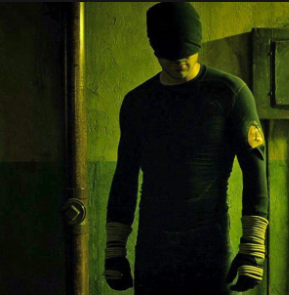
We have Netflix to thank for a very important style of storytelling. It had already been around in some shows, such as Firefly, or some of the crime dramas, but Netflix is what has made it mainstream—the bingeable episodic story. As I mentioned, it was already around. Take the graphic Novel. A Graphic Novel might be a twice yearly release of a comic book, compiling six months worth of stories into one place, but aren’t we all thankful to be able to sit and read a perfect bound story in one sitting? Each episode/comic might be standalone, but you knew when you bought it, that there would be a cohesive arc across the entire Graphic Novel.
Until Netflix, the vast majority of shows suffered under the burden of needing to capture the attention of their audience each and every week. Every episode of Star Trek needed to ensure if this was the ONLY episode you watched, you wouldn’t be lost and you’d know who each and every character was. Not any more. Take the Netflix Original series for the Marvel Knights such as Daredevil and Luke Cage. If you were young enough to pull it off, you could watch the entire season in one night. I was thankful each broke down into two separate arcs under the umbrella of a single story that would tie it all in together at the end. They took lessons from Graphic Novel storytelling, and told a full year of stories told in a single season. They could take their time with an episode in the middle with a ton of exposition, because they knew they had your attention, and you wouldn’t be at that episode without having watched the others. You were in the middle of your binge, and perhaps needed an escape from the excitement, (or relief from the adrenaline rush of the Hallway Scene in Daredevil Season 1, Ep. 2.)

Why do I bring all this up? Because of this, we now have “permission” to use the same storytelling form. A novel can be episodic like the Netflix series, or the graphic novel. It was a form of storytelling I wanted to employ in Thrice. “If I was directing this book as a show, how would I break this down?” And so I kept that in mind when I outlined the book. Of course, rules and plans like this don’t always go according to the plan. But analyzing stories, and making plans are important, just as Sun Tzu said, (paraphrase) “Always make a plan, even though it will fall apart as soon as you get to the battlefield. But it’s the margin of the plan that prepares your mind for the battle.” Having a structural plan for my outline was important to me, and would provide the skeleton for the flesh of my outline to sit upon. And I’d like to think it’s the better for it, after these two and a half years of work I’ve put into it.
